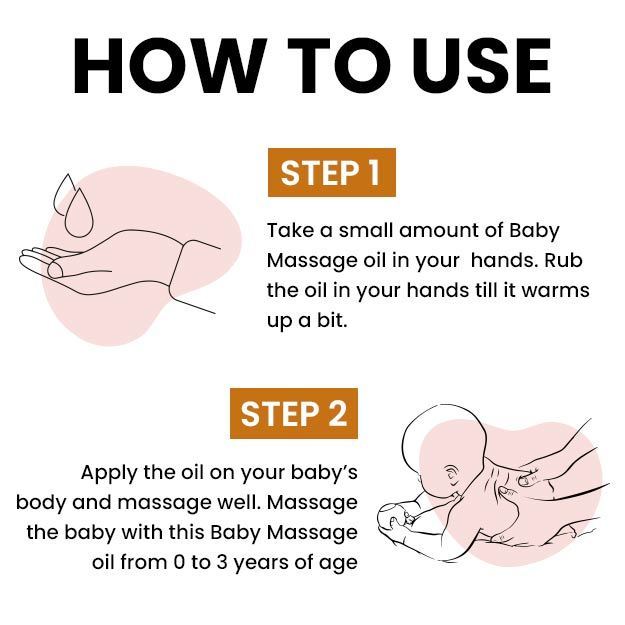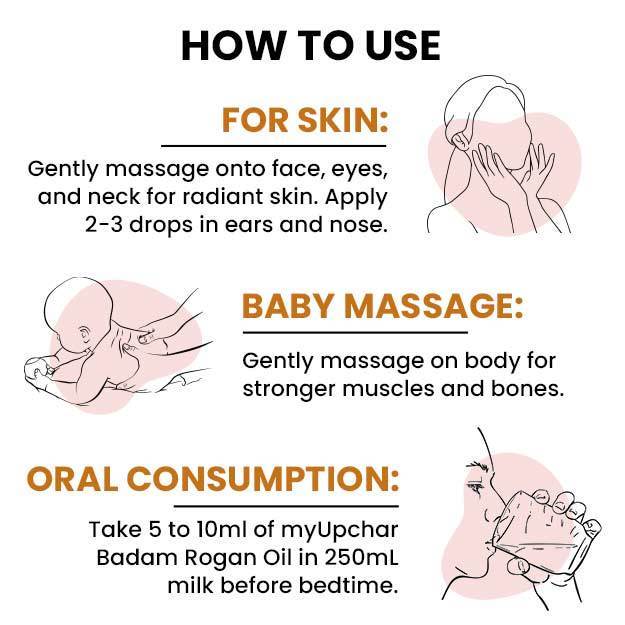Birth weight refers to the weight of the baby measured immediately after being born. It is usually indicated in grams in order to measure even the smallest of changes. If it is measured in kilograms, then it is important to consider the value up to three places after the decimal point. Birth weight is an important parameter in a baby’s life as lower birth weight babies are at greater risk of mortality, complications and later life outcomes. The third-trimester ultrasound, or the latest ultrasound conducted before delivery, provides an estimated birth weight (EBW), which can help guide anticipatory measures to allow a smooth complication-free birth. Estimated birth weight (EBW) also allows parents and doctors of newborns that are small for gestational age (SGA) to prepare for the care necessary. Besides ultrasound measurements, on each antenatal checkup, the obstetrician measures the fundal height or size of the growing uterus inside the belly. The measured values of the uterus position are compared to the expected height for the given weeks of gestation. If these two values correspond, usually it is given that the baby is growing adequately. However, it should be noted that after 36 weeks of pregnancy, a phenomenon called “lightening” occurs, which is associated with the uterus descending downwards into the pelvis and the overall fundal height of the uterus reducing. Sometimes a smaller pregnant belly is not due to a smaller baby but because of other reasons like reduced amniotic fluid. Birth weights vary with ethnicities and babies of Asian descent tend to weigh slightly lesser on average than those of European ancestry. However, birth weight is described within a range to allow for genetic variations. The normal birth weight for a baby is between 2,500 and 4,500 grams. Babies weighing under 2,500 grams are regarded as low birth weight babies and those weighing over 4,500 grams are regarded as high birth weight or macrosomic babies. Broadly speaking, there are two main types of low birth weight babies — those born preterm (before 37 completed weeks of gestation) or those born at term or beyond but small for gestational age (SGA).
- What is low birth weight
- Signs and symptoms of low birth weight
- Causes of low birth weight
- Risks and complications of low birth weight
- Management of low birth weight
- Prognosis of low birth weight
What is low birth weight
Low birth weight refers to any weight lower than 2,500 grams at birth. However, in order to better differentiate low birth weight babies and address their individual needs, birth weights are further categorised as:
- Low birth weight (LBW): Babies weighing less than 2500 grams at birth
- Very low birth weight (VLBW): Babies weighing less than 1500 grams at birth
- Extremely low birth weight (ELBW): Babies weighing less than 1000 grams at birth
The reason for low birth weight is equally important as the actual weight to guide the management and outcome of such babies. Low birth weight babies are more prone to complications and require special care and hospital admission. Depending on the severity of low birth weight and the weeks of gestation at which the baby is born, routine care, like feeding, too differs. The most common reasons for low birth weight is a baby being born too soon (preterm birth) or being smaller than expected for gestational age.
(Read more: Newborn health care tips)
Signs and symptoms of low birth weight
Low birth weight babies present and appear differently depending on the underlying cause. Signs and symptoms of low birth weight babies may be as follows:
- Premature babies: Babies weigh less than 2,500 grams and have thin, shiny, pink skin through which the underlying veins are easily seen. Little subcutaneous fat, hair or external ear cartilage exists. Spontaneous activity and tone are reduced and limbs are not held in the flexed position typical of term infants.
- Small for gestational age babies: Although smaller in size and weighing less than 2,500 grams at birth, the babies have physical characteristics (for example, skin appearance, ear cartilage, etc) and behaviour (for example, spontaneous activity and tone of the body) similar to those of normal-sized full-term babies. However, they may appear thin with decreased muscle mass and subcutaneous fat tissue.
(Read more: Caring for a premature baby)
Causes of low birth weight
Low birth weight can be caused due to one or more reasons. Understanding the cause of low birth weight is important to treat the baby correctly. The reason for low birth weight also alters long-term consequences and outcomes for babies. There are two different types of low birth weight babies:
- Premature or preterm baby: The term for a normal pregnancy is considered to be attained after 39 weeks of gestation. Births that take place between the start of the 39th week and the end of the 40th week are regarded as full term births and are associated with the best outcomes for babies and mothers. Births that occur before 37 completed weeks are called preterm births. As the pregnancy progresses, babies undergo significant growth and development each week. Therefore, if the pregnancy is cut short, due to any reason (before the baby is fully mature by 39 weeks), complications are bound to arise after birth. Globally, prematurity is the leading cause of death in children under the age of 5 years and India has the greatest number of preterm births worldwide. According to the World Health Organisation (WHO), 1 in 10 children is born premature and nearly 1 million babies die each year due to complications of being born prematurely. Reasons for preterm births include:
- Adolescent pregnancies: Very young age at pregnancy (less than 17) can result in preterm births.
- Advanced maternal age: Pregnancies at the age of 35 years or beyond can increase the risk of preterm births.
- Premature birth in a previous pregnancy.
- Multiple pregnancies (like twins or triplets or other higher-order pregnancies)
- Chronic conditions such as diabetes and high blood pressure (both pre-existing and pregnancy-induced), heart disease, asthma, thyroid disease, anemia or kidney disease
- Certain infections, such as urinary tract infections and amniotic membrane infections (chorioamnionitis)
- Maternal genetic factors
- Poor nutrition before and during pregnancy (undernutrition and micronutrient deficiencies like anaemia)
- Obese mother
- Smoking, using illegal drugs, or drinking too much alcohol during pregnancy
- Violence or abuse to the mother can trigger a preterm birth
- Excessive physical activity during pregnancy like manual labour
- An abnormal uterus
- Cervical incompetence, a condition where a weakened cervix opens early and initiates labour
- Maternal depression
- Small for Gestational Age (SGA) baby: Some babies are born at term or beyond (after 39 completed weeks of pregnancy) but do not weigh what is normally expected for a term birth. Gestational age is loosely defined as the number of weeks between the first day of the mother's last normal menstrual period and the day of delivery. The reason for low birth weight in term or post-term babies is growth restriction while in the uterus, or intrauterine growth retardation (IUGR). Growth restriction in small for gestational age (SGA) babies can follow one of two patterns – symmetrical or asymmetrical growth restriction.
- Symmetrical growth restriction: Symmetrical growth retardation begins early in pregnancy, usually by the first trimester and, therefore, all body parts and cells are equally affected. Causes of symmetrical growth restriction include:
- Genetic disorders
- First-trimester congenital infections of the mother (eg, with cytomegalovirus, rubella virus or Toxoplasma gondii)
- Asymmetrical growth restriction: This type of growth restriction occurs later in the pregnancy (second or third trimester). As many organ systems have already been developed at this point, the growth restriction only affects a few organs and is asymmetrical in its effect. Causes of asymmetrical growth restriction includes:
- Placental insufficiency resulting from a maternal disease involving the small blood vessels (eg, preeclampsia, hypertension, renal disease, antiphospholipid antibody syndrome, long-standing diabetes mellitus)
- Relative placental insufficiency can also occur due to multiple pregnancies (twins, triplets or other higher-order pregnancies)
- Placental involution accompanying postmaturity: After reaching term at 39 weeks of pregnancy, the placenta begins to regress having served its purpose of supplying nutrients and oxygen to the growing baby. If the birth has not happened by 42 weeks (post-term pregnancy), the normal placental involution can impact the baby still in the womb.
- Chronic maternal hypoxemia caused by pulmonary or cardiac disease: Prolonged low levels of oxygen in the mother’s blood due to preexisting disease can deprive the growing infant as well.
- Mother’s heavy use of opioids, cocaine, alcohol, and/or tobacco during pregnancy
- Maternal malnutrition
- Conception using assisted reproductive technology (ART)
- Symmetrical growth restriction: Symmetrical growth retardation begins early in pregnancy, usually by the first trimester and, therefore, all body parts and cells are equally affected. Causes of symmetrical growth restriction include:
Risks and complications of low birth weight
Both preterm babies and small for gestational age (SGA) babies are at an added risk of developing complications. While small for gestational age (SGA) babies usually catch up with normal birth weight babies, premature babies are more prone to drastic, and sometimes life-threatening, complications. Examples of the complications that can plague low birth weight babies include:
- Preterm babies: The severity of preterm complications increases with decreasing gestational age. A baby born earlier will have more complications due to prematurity. Extensive complications can arise in preterm babies due to immature organ systems like:
- Necrotizing enterocolitis: Formula-fed premature infants with immature guts are at risk of bacteria invading their bowel walls and damaging them.
- Feed intolerance: Premature babies are not able to breastfeed. Expressed milk, formula milk or even nasogastric tube feeding may become necessary to feed them.
- Retinopathy of prematurity: Abnormalities in blood vessels of the eye can cause scarring of the retina and lead to permanent blindness in very low birth weight babies.
- Patent ductus arteriosus: Ductus arteriosus is an opening in the heart that allows oxygenated and deoxygenated blood to mix in the foetal circulation. This opening closes in term infants but it persists in premature ones. Ibuprofen is given to close it.
- Developmental or cognitive delays: Normal milestones in the development of the child (such as sitting, walking or talking) can be delayed.
- Neonatal sepsis: Bacterial bloodstream infections are common in preterm babies.
- Respiratory distress syndrome: Surfactant is a naturally occurring chemical substance in human lungs that reduces the surface tension inside the alveoli (air-filled sacs in the lungs where oxygen and carbon dioxide exchange occurs). By 35 weeks of gestation, most babies normally develop surfactant in their lungs. Immature lungs can result in respiratory distress syndrome.
- Neonatal hypoglycemia: Small babies have fewer glycogen stores and can experience low blood glucose levels.
- Neonatal hyperbilirubinemia or jaundice: The immature liver in preterm babies is unable to conjugate and excrete bilirubin (a breakdown product of red blood pigment haemoglobin). As blood levels of bilirubin rise, the baby appears jaundiced and yellow.
- Hypothermia: Small babies tend to lose more body heat.
- Small for gestational age (SGA) babies: Even though full-term small for gestational age (SGA) babies do not share the complications of immature organ systems that premature babies face, they too can be at the risk of the following, owing to their low birth weight:
- Perinatal asphyxia: Intrauterine growth restriction (IUGR) due to placental insufficiency causes deprivation of oxygen to the baby, especially during uterus contractions in the delivery process.
- Meconium aspiration: Meconium is the baby’s feces that is normally passed after birth. Sometimes, it can be passed by the baby into the amniotic fluid while in the womb. This can be inhaled by the baby during birth and cause respiratory distress.
- Hypoglycemia: small babies have fewer glycogen stores and can experience low blood glucose levels.
- Polycythemia: Excessive red blood cells may be present in the blood circulation of babies with placental insufficiency to compensate for low oxygen levels.
- Hypothermia: Small babies tend to lose more body heat.
Management of low birth weight
Preterm infants usually require Neonatal Intensive Care Unit (NICU) admission, monitoring and screening. Investigations are also conducted to diagnose complications and specific treatment is carried out. Supportive care, especially the appropriate feeding techniques, are paramount for preterm babies.
Babies less than 34 weeks of gestation are fed by nasogastric tubes. After reaching 34 weeks, breastfeeding is encouraged. Breast milk fortifiers can be added to enhance the calcium, phosphorus and protein in breast milk. Premature baby specific milk formulas are also available. If nasogastric tubes are not tolerated within the first 48 hours due to poor condition of the baby, intravenous nutrition is given.
Premature babies are discharged from hospital care after they are able to have an adequate amount of milk without special assistance, gaining weight steadily and able to maintain a normal body temperature in a crib. Usually, this is around 35 to 37 weeks when the baby weighs approximately 2,500 grams.
Small for gestational age babies do not need specific treatment; only supportive care and correction of asphyxia if present. Good nutrition can help them catch up in growth.
Prognosis of low birth weight
Outlook for preterm babies improves with increasing gestational age at birth. With proper care and treatment, many immature organ system complications can resolve but, in some cases, residual organ dysfunction can persist lifelong.
The prognosis of small for gestational age (SGA) babies is generally better than preterm babies. If asphyxia is prevented, neurological complications do not arise. With proper nutrition, remarkable catch-up growth occurs in these babies.
Doctors for Low Birth Weight

Dr. Anil Pathak
Pediatrics
42 Years of Experience

Dr. Pritesh Mogal
Pediatrics
8 Years of Experience
Dr Shivraj Singh
Pediatrics
13 Years of Experience

Dr. Varshil Shah
Pediatrics
7 Years of Experience
References
- Hughes MM, Black RE, Katz J. 2500-g Low Birth Weight Cutoff: History and Implications for Future Research and Policy. Matern Child Health J. 2017 Feb; 21(2):283-289. PMID: 27449779.
- Shen Z Z, et al. Chinese Pregnant Women Cohort Study-Peking Union Medical College Collaborative Group [Risk factors for preterm birth, low birth weight and small for gestational age: a prospective cohort study]. Zhonghua Liu Xing Bing Xue Za Zhi. 2019 Sep 10;40(9):1125-1129. Chinese. PMID: 31594158.
- Stieb DM, Chen L, Eshoul M, Judek S. Ambient air pollution, birth weight and preterm birth: a systematic review and meta-analysis. Environ Res. 2012 Aug;117:100-11. PMID: 22726801.
- Chabra S. Small For Gestational Age and Low Birthweight: Distinct Entities. Am J Gastroenterol. 2018 Mar;113(3):441-442. PMID: 29535438.
- Patel P, Bhatia J. Total parenteral nutrition for the very low birth weight infant. Semin Fetal Neonatal Med. 2017 Feb;22(1):2-7. PMID: 27576106.
- Oudgenoeg-Paz O, Mulder H, Jongmans MJ, Van der Ham IJM, Van der Stigchel S. The link between motor and cognitive development in children born preterm and/or with low birth weight: A review of current evidence. Neurosci Biobehav Rev. 2017 Sep;80:382-393. PMID: 28642071.

























